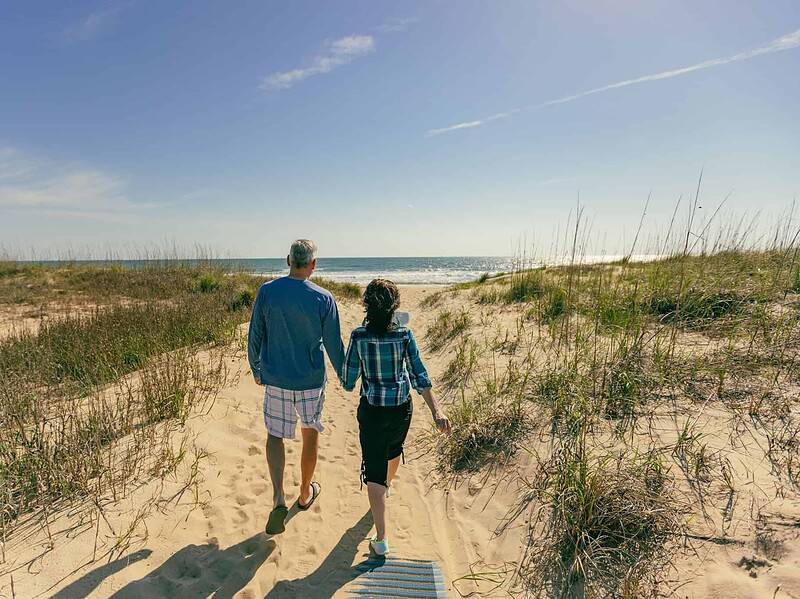Set aside by President Roosevelt in 1938 as a haven for migratory birds, this thin spit of land between the Atlantic Ocean and the Back Bay offers some of the best birdwatching on the Eastern Seaboard. The 9,108 acres of the Back Bay National Wildlife Refuge contains barrier islands, dunes, coastal woodland, freshwater marshes, maritime forests, ponds and sandy beaches — all essential habitat for the 300 different species that make the refuge home.
While wildlife watchers have plenty to see year-round, the refuge is a birdwatcher’s paradise in the fall and winter, when migrating flocks of duck, goose and swan species stop here to rest and feed before their long journey south. Educational tram tours run from April 1–October 31. Birding enthusiasts should check the calendar of Ranger-Led Programs for special seasonal programming.
Within the refuge, there are seven hiking trails to explore, along with access to pristine, uncrowded beaches. Due to the area’s protected status, swimming and sunbathing are prohibited — but it’s an absolute treasure trove for wildlife photographers and shoreline strollers. Hikers, take note: To protect seabird nesting and resting areas, the refuge’s two longest hikes, the East and West Dike trails, are closed from November 1–March 31. Raptor, Kuralt, Seaside and Dune Trails remain open year-round, as does the beach.

Back Bay National Wildlife Refuge
Keep Exploring
Related Articles
Discover the many natural wonders of Virginia Beach.

Outdoors
First Landing State Park | Explore Virginia’s Most-Visited State Park
First Landing State Park, a 2,888-acre Natural Landmark, features 19 miles of trails, diverse ecosystems, and historic pirate legends, making it Virginia’s most visited state park.
Read more
Outdoors
Explore the Back Bay National Wildlife Refuge
Discover Back Bay National Wildlife Refuge in Virginia Beach, a 9,108-acre sanctuary home to over 300 bird species, diverse wildlife, and untouched natural beauty awaiting your exploration.
Read more
Outdoors
Easy Hiking Trails in Virginia Beach
Discover easy, scenic hiking trails in Virginia Beach, including family-friendly routes through parks and nature reserves.
Read more#VisitVaBeach
Picture Yourself in Virginia Beach
Feel the destination’s warm welcome as you browse photos from other visitors’ unforgettable vacations, then start planning your escape to Virginia Beach.



